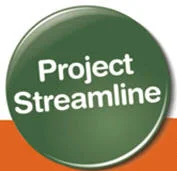To read the full "Primer for Best Practices," click here.
The following article is an excerpt adapted from the research report "Benchmarking Study of Best Practices in Grant Management Software for State Arts Agencies," conducted on behalf of the Pennsylvania Council on the Arts in 2014.
By Sally Cao, Lauren Harrison, Graciela Kahn, Signe Lindberg, Lillian Mo, Kimmy Nguyen, Ana Vazquez-Trejo, and Ying Zhu, Heinz College, Carnegie Mellon University.
Source: Idealware
State arts agencies need to report not only to NASAA and the NEA, but also to other entities, such as state legislatures and the general public. These reports communicate impact to all stakeholders within the agency and across its jurisdiction. A GMS’s querying and reporting capabilities impact how this information is accessed and, ultimately, understood. A Consumer’s Guide to Grants Management Systems, published by Idealware in 2013, explains that for solid reporting capabilities, a GMS should “search or filter to find a particular set of grants based on status, program, and cycle, and view pre-packaged reports based on this customized set of grants; save reports that you create or modify; [and] support ad hoc reports, which can include nearly any field displayed to users.”
Because the grant making process is not isolated from other activities occurring within an arts agency, and often depends on software for other activities (such as fund disbursement), a GMS should be able to integrate with other platforms. Project Streamline’s Guide to Streamlining Series recommends choosing a vendor that offers an application programming interface (API), thereby allowing data “to be written to and from third party systems.” It explains the advantage: “Grant makers could benefit greatly by taking the best parts of one system and marrying them with another system or creating their own programs to extend the capabilities of a grants management database.” For instance, when GMS systems integrate with, or are built on, customer relationship management systems (CRM), grantors have the potential to leverage the robust tracking of all communications to build strong relationships with applicants and grantees.
Arts agencies exist within a complex system that poses unique challenges and opportunities for their grants management processes. Among the components of this process are an agency's constituents, funding sources, data collection history, and current grants management system. For this reason, the value of a GMS for a specific arts agency will depend not only on its technical capabilities but also on the implementation and adaptation of best practices. These practices pertain to every step of the grant lifecycle, from application through post-award relationships. Regardless of what GMS an organization uses, structuring program guidelines clearly, facilitating a smooth, online review process that accommodates reviewer needs, communicating clearly with applicants (both those that are awarded grants and those that are not), understanding data collected, and integrating GMS with other related systems will maximize the value of its grant-making process.




